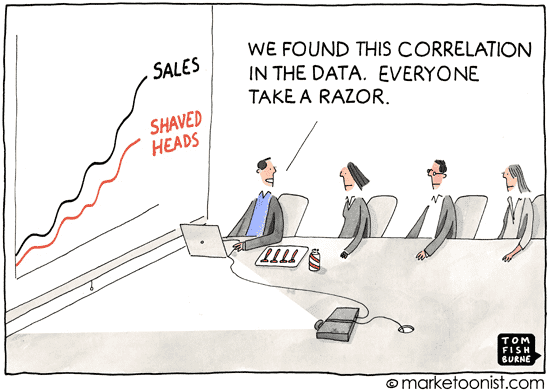
Did you know that your pricing revenue model is a leading indicator of business growth and profit loss? More importantly, do you know how to prevent and rise above a financial loss in revenue? Today, we’re going to discuss real-world examples of businesses that experienced loss and how they dealt with it. In addition, we’ll share tips about ways that your business can increase profit when dealing with loss in business revenue.
>Download Now: Free PDF How to Avoid Pricing Chaos
According to countless business transformation case studies, the state of your price management system is one of the best ways to find out if you’ll make enough money out of your business strategy.
Table of Contents: Loss in Revenue
I. The Types of Financial Losses You’ll Experience From Undisciplined Pricing
II. How to Deal with Massive Financial Loss in Revenue Linked to Bad Pricing Decisions
III. How to Recover From Financial Loss in Revenue and Bad Pricing
IV. Is Loss Revenue Caused by Underperforming Pricing Teams?
Capability Building Programmes For Pricing & Sales Teams!

Loss in Revenue: Types of Financial Losses You’ll Experience From Undisciplined Pricing 🏜️
Nokia: A case study
In the 1990s, Nokia was the top producer of mobile phones in the world. They were the dominant player in the cellphone market. Then came the smartphones – which pretty much replaced the Symbian consortium system (the dominant system preceding IOS). Nokia was the dominant user of the old Symbian consortium system. While Apple and Samsung used the IOS and Android system – a system that offered people more apps and user-friendly navigation.
Nokia tried to regain lost ground and deal with financial loss by introducing the Windows phone created by Microsoft. But the apps were difficult to use and limited in numbers. There weren’t enough apps in the marketplace to create a viral network effect. Since then, the Windows phone didn’t take off with the public.
What Is A Chief Revenue Officer And What Should They Know About Pricing 🧑🏼💼 Podcast Ep. 110!
Product-Focused
A sticking point for Nokia at this time was that they saw themselves as an engineering firm for technology systems and a manufacturer of phones. They were a product-focused business and prioritised improving the details of their technology.
At this point in time, Nokia wasn’t really considering selling to end consumers with a new, direct to market online retail strategy. They were working within the confines of a traditional B2B transactions model with large wholesalers and retailers.
Their pricing revolved around complex and lengthy tenders and legal contracts. So, it would have been very difficult for them to transform the business model to keep up with the changes around them under this traditional B2B pricing and revenue model.
Tied to contracts with powerful wholesalers and retailers, they were likely hamstrung for a time. Worse, they couldn’t sell directly to the end consumer. So, they were involved in lengthy tender pricing processes, difficult sales negotiations, and tough pricing discussions with procurement teams.
At that point, Nokia was essentially dependent on wholesalers to distribute their goods on their behalf. Retailers also had to sell to end consumers for Nokia, both locally and abroad.
Value chain
Over time, Nokia would have found it very difficult to understand its value chain or monitor its product life cycle. These two are very important elements of a pricing strategy and price-setting process. Their phones were accelerating life cycle as Apple and Samsung were creating new phones with better systems. But the list price strategy would have been more aligned with their internal metrics and costs rather than on customer’s willingness to pay.
Price Skimming Approach
All the while, they were using a price skimming approach to set prices for new products. They failed to adjust prices fast enough to push the right products and update their product pricing strategy.
The extended product life cycle by iPhone’s innovation was a destabilising experience for Nokia. Like many businesses, they would’ve started to match their prices with competitors to stay in the game.
Unfortunately, at this point, their sales volume had already declined significantly. Their manufacturing costs and cost of goods were increasing due to excessive discounting on high-value items. In other words, they failed to build a path on how to deal with financial loss ahead of time – until things eventually caught up with no reverse option.
Retailers would have realised that Nokia’s brand power was not as strong as it once was. From this, there was a large cutback on the range of Nokia phones being sold and displayed in outlets.
Business researchers also found out that its technology was not at the same level as Apple’s offer. This meant that they could no longer legitimately command the price premiums that they once did with outdated technology. Even the brand name ‘Nokia’ wasn’t enough to retain their advantage over their rivals.

How to deal with massive financial loss in revenue: Could Apple’s iPhone be heading in the same direction?
Nokia is not the only company that has faced severe business and pricing problems. Apple technology is also accelerating through its life cycle – just like Nokia did twenty years ago. Apple is working hard to reinvent its offer and review its prices. Sales revenues have dropped significantly since 2018. It lost one-third of its trillion-dollar market cap in the last quarter of 2018 and 10% in the first quarter of 2019.
iPhone pricing problem
iPhone pricing problems are pretty simple. They are facing price pressure – not just because of changing economic situations or fluctuating currency. iPhones are just too expensive for the average consumer. The new features added this year to the iPhone XS, XS Max, and XR have more powerful processors and vivid screens. This just didn’t align with consumer preferences. The XS Max is the most expensive iPhone ever, starting at $1,100.
Pricing Adjustment
With people still paying for their current devices, many consumers are reluctant to upgrade. Apple should consider adjusting their prices or changing their offer for the following reasons:
1. Their prices don’t change much year to year, indicating a fixed pricing approach across products and segments.
2. Their price rise strategy is predictable. They tend to add a fixed amount across the range – not many variations across their product base, indicating margin-based pricing rather than value-based.
3. Additionally, their price bandwidths are too narrow. There is no excessive discounting and their high prices across all categories isolate a lot of consumers from the equation – even if consumers were willing to buy older iPhone models, only if they were a bit cheaper.
4. They are geared towards becoming a brand for rich kids, young professionals, and executives.
5. Their versioning strategy is outdated. They rely on launching a new phone to get everyone racing to get their hands on it.
6. They use a predictable price skimming strategy to push new products. To a certain degree, they keep all their product prices high regardless of outdated products in terms of the product life cycle.
Apple’s pricing team may need to re-evaluate iPhone’s price architecture and partnerships with major telcos to solve their pricing issues. However, this might be tough under their current business model. Apple’s customers are tied to lock-in contracts, enforced by telco providers. This means Apple’s business model innovation, like Nokia’s, is in stasis because of its pricing structure and ecosystem.
Apple’s business strategy
Apple’s strategy is firmly focusing on investment and buyer consolidation right now, rather than improving their pricing. The Apple TV streaming services are jumping in on the bandwagon. Everyone seems to want a piece of entertainment streaming like Netflix.
They’re also developing the virtual reality system and a self-driven electric car of the future, among other things. Diversification and consolidation are what Apple targets these days, as opposed to specialisation and affordability. Those two things built the brand as a market leader in the first place.
Pricing Recruitment For Pricing Managers!
Implications
- Your pricing is a summation of the total economic value of your business. Choose the wrong pricing strategy, approach, or team in implementing a strategy, and you’ll end up facing excruciating years of financial losses and downgrades. Your business model becomes superseded causing major customer churn.
- Without a good pricing system customised to reach your business objectives, you can’t monetise the full economic value of any of the changes you’ve made to your business model, operations, or IT infrastructure.
- In the world of uncertainty and market disruption, outdated pricing systems cause financial losses. The brick-and-mortar of doing business will long be gone. We’ve entered the realm of digitalised business and pricing. So, you need to refresh your revenue models to keep up with business transformation and markets.
〉〉〉 Get Your FREE Pricing Audit 〉〉〉
Conclusion
How you set the price is one of the types of financial losses driver. On the other hand, the correct pricing generates incremental EBIT growth. Most importantly, pricing is your number 1 driver of sustainable growth in an increasingly dominated global market. This is something a lot of business owners and leaders don’t fully realise yet.
Your pricing structure now may be killing your long-term future business prospects. That includes any chances of recouping other types of financial losses incurred from past price rise mistakes.
Do not underestimate nor downplay the role of pricing during a significant business transformation. Second to operational improvements, you risk a derailing strategy, volume, and revenue loss, and end up paying for a zero margin gain.
Capability Building Programmes For Pricing & Sales Teams!

How to Deal with Massive Financial Loss in Revenue Linked to Bad Pricing Decisions
In a materials business based in the Inner West region of Sydney, the CEO is puzzled over a common financial control problem that many B2B businesses face. He has a large sales force that uses prices to compete in many locations and market segments. His business serves a lot of customers and has an extensive product portfolio.
Most of its sales branches are forced to apply heavy discounts to drive volume, but still aren’t making enough profit. They are losing margin due to overpricing and lost volume opportunities because of under-pricing. There are also a handful of sales branches selling near or above the price list.
There are productivity declines in the corporate head office. Morale is low and sales managers want to improve profitability. But they don’t know how. There’s a misleading belief that discounting is the only way to stay ahead in an increasingly competitive market.
What Is A Chief Revenue Officer And What Should They Know About Pricing 🧑🏼💼 Podcast Ep. 110!
The CEO asks himself: “Why are branches performing so differently?”
He cannot figure out the lack of correlation between geography and product lines with high, and low-performing branches. So, the CEO calls for a meeting with his sales director and sales managers.
He wants to know why branch performance highly varies and hopes they could explain it to him. Unfortunately, the sales manager’s explanations are diverse and confusing as individual branch results differ.
The CEO could not figure it out. Can you? What do you think is happening here?
First of all, this company has no price management process plus insufficient financial control. There is a lack of pricing policy, procedures, and dedicated pricing teams in place to create strategies or improve executions. This wastes lots of money from not differentiating between the markets, customers, and products. Then, there are limited analytical insights on competitive dynamics too. Lastly, it hasn’t considered supply-and-demand volatilities.
Another problem in this case study is that their teams do not understand the price-value equation. They also fail to monitor and adjust price changes based on rigorous analysis of customer value drivers. These are all important factors in realising how to deal with financial loss.
There is a lack of:
- Real price expertise in the business
- Testing and learning about price changes is non-existent
- Teams are not working together because there is no clear execution process in place
They don’t know who to turn to, where to get the information, and how to perform price duties. Their pricing is chaotic. But the business keeps selling its stuff, albeit at the expense of margin dollars. Worse, the CEO believes that this means pricing is not a priority.
How to manage and deal with financial loss: Why is maintaining financial control so difficult?
Most companies we meet actually run highly efficient enterprises. However, when it comes to pricing, most businesses (big and small) are surprisingly lax.
Even if the business is managing revenues of $500 – $1B, companies can’t seem to escape the relief that goes with winning a deal. They either get complacent or resistant. Either way, inertia slowly creeps in, and people become comfortable. Many do not take affirmative price action because they fear that this will rock the boat.
Finding the business financial control levels is a good indicator of confidence and ability to execute a marketing strategy. It tells how a business offers real value to its customers.

Furthermore, value is a mindset. Financial control is a behavioural manifestation of a value set in motion through execution. In fact, the final sale price is a tangible representation of the total economic value you provide for your customers.
How to deal with financial loss: How can I encourage more financial control in my business?
1. You should think about using a value-based segmentation framework – rather than grouping sales branches or customers by locations and product lines.
2. Location is a time-honoured segmentation principle. I realise, along with others such as size or type of average customer, however, it is a crude segmentation. Many companies do this and fail to account for the market environments of individual branches, stores, franchises, etc.
3. Think about the market environment: market changes are an independent variable. How will you alter your financial control, strategy, structures, and operations according to the market?
If the market changes, then you’ll need to adjust your strategy or sub-strategies as well. In a changing market, your ability to execute actions quickly is now as important as strategy.
In a stable market, a strategy is your guiding force in how to deal with financial loss in revenue.
For an unstable market execution, financial control and learning from price adjustments are your main vehicles to navigate unknown high-competition and disruptive markets.
As a result, changing only your strategy, but ignoring your organisation structure, execution lifecycle, and processes will make it more difficult to stay competitive in the market. Without the right people and processes in motion, inertia dominates, and outcomes do not happen in underwhelming dribs and drabs.
The millions that your business may have spent on external consultants refining its strategy or implementing software remains a PowerPoint pack in a continual test environment.
Pricing Recruitment For Pricing Managers!
Implications
“For every action, there is an equal and opposite reaction,” is Newton’s third law of physics. You need the right people, structures, and financial control to build an aligned pricing culture. In fact, financial control doesn’t stop when optimal prices have been achieved and variability brought under control.
The market is also changing. This means that you’ll have to adjust everything else, i.e., strategy, structure process refinement. You have to identify products that are no longer profitable and monitor customer churn too.
In other words, a product’s value changes as customer behaviour and market trends evolve. It’s necessary to change prices as a result of new market information to be more sophisticated and accurate about your price changes.
You can’t simply rely on instinct or settle for cost-plus pricing either. Rather, advanced price analytics and financial control require pricing and sales teams to be aligned and skilled. A great strategy means nothing when people or processes are ill-equipped to drive price changes.
Lastly, businesses with a revenue of over $100M should position their own dedicated pricing team.
〉〉〉 Get Your FREE Pricing Audit 〉〉〉
Conclusion
A pricing team monitors and adjusts prices according to market changes. They keep a close eye on price rises and work with other functions, divisions, and senior management to discuss price options and suggestions.
There should be a culture of testing and learning. This improves execution processes to drive more results for price improvement programs and initiatives. A 1% improvement in price yields more significant gains than a similar increase in costs or volume.
In fact, price discipline in your business could be your number one profit lever to maximise margins across markets and customer segments without risking volume. However, real financial control requires senior leadership sponsorship.
Capability Building Programmes For Pricing & Sales Teams!

Loss in Revenue: How to Recover from Financial Loss and Bad Pricing 🦚
Liberate yourself from old habits
No matter the industry, product line or how great or innovative the commercial offer, B2B businesses across Australia find themselves in unpredictable and unprecedented situations. Often there is a lack of real reference points, defences, or decision making processes to fall back on.
Nowadays, margin erosion is a common complaint and point of concern at many executive management meetings. From volatile FX and commodity prices, new market entrants to professional buying teams, complex buying cycles and lower demand levels, margin erosion creates a proliferation of complex B2B environments, problems, and cracks in business and commercial models. Pricing pressure and control is no longer an exception, but the norm.
What Is A Chief Revenue Officer And What Should They Know About Pricing 🧑🏼💼 Podcast Ep. 110!
Loss in Revenue: Why is this happening?
1. The business models, profit levers, and price control mechanisms that drove revenue and profitability 20 years ago are significantly different from those that operate today. Many businesses were built on cost plus pricing management (i.e., cost to produce product figures plus mark-up percentage.) However, this is ceasing to be the case. A growing number of B2B businesses across Australia opt for more sophisticated ways to manage price control and value.
2. Without many businesses even realising it, cost plus price control and internal pricing negotiations are preventing your sales teams from winning deals. Pricing arrangements built on cost plus mark-up are inflexible and uncompetitive. They leave your sales teams open to procurement teams that are ready to cherry-pick prices by line item.
All the while, the sales teams are left in the defence position, explaining numerous pricing discrepancies that customers have picked up in your list price. They also notice discount structures and risks, as opposed to sharing customer value experiences that could either help or damage the business.
3. Don’t think that customers never notice inconsistencies in your pricing method. As the procurement function grows in numbers and sophistication, so does their ability to detect poor price management.
Price control structures that are derived from cost plus mark-up calculations only serve to trade off hard-earned margins. They offer practically no room for a sales team to move to the next opportunity. Cost-plus price control is a predictable formula that doesn’t quite fit in with the demands of modern business and trade.
4. Cost-plus pricing does not attract customers and shareholders in the long term or future. There are a growing number of B2B businesses that realise this as they see first-hand negative results that cost plus mark-up has on profitability. It’s a case of double-pronged attack from fluctuating and rising costs on one hand.
What’s more, customers choose to work with suppliers based on the strength of their price list. Large price bandwidths, erratic discounting, and poorly structured, non-incentivised volume rebates are all overt warning signals. This shows buying teams that a supplier is not in control of profitability and may be a risk to work with.
On the other hand, there are excessive discounting and volume-based ‘passive’ rebates gradually happening in the decline of earnings. Unfortunately, most management teams are unaware and don’t know how or why cost-plus damages profitability and credibility.
How can operations affect loss in revenue in business culture?
A cost-plus mindset is the antithesis of customer centricity or customer value. In fact, it is a reductionist process that eventually disconnects the business from people, driven by rough estimates of costs or guesswork.
More management teams should be asking: Is cost plus a reliable method to set prices? Although it postulates a logical argument in an excel spreadsheet, it doesn’t account for market variability nor speak to the commercial mechanisms that motivate a deal.
It can become deeply ingrained in a company psyche without fully realising the full extent that it influences sales behaviour and commercial decisions. So much so, that the mere suggestion of alternative pricing methods or practices like value based pricing can provoke dismissive comments in meetings. If value pricing feels strange, awkward, or silly, these are signs that the business actually needs to rethink price setting.
A cost-plus mindset is closely connected to a commodity mindset. It’s very typical to find group discussions on possibly changing the status quo overridden with statements like:
1. Value pricing does not work in a sales organisation,
2. We sell commodities, where’s the value?
3. Our customers don’t care about the value we offer, they just want a better price.
Breaking a cost-plus mindset is not easy, as an MD recently said to me: “Transitioning from cost plus can feel like you are letting go of the steering wheel.” To be bravely accountable for past decisions and behaviours can be confronting. It’s difficult to take the first step to test and validate your business model with customers as they tell you what you don’t want to hear, but what you need to hear.
It may even feel uncomfortable diagnosing the maturity of well-worn internal commercial management systems and price control structures that have served you well in the past. Yet, these may likely be the very obstacles creating most of your problems.
Here’s how you can deal with financial loss – Ways a Business Can Increase Profit
1. Assess the situation. Diagnosing your real business problem is the foundation upon which to drive innovation. However, there are relatively few B2B businesses that objectively diagnose their business problems. Often, businesses choose to do this internally. Although this is better than nothing, discovering real business problems are largely unproductive.
Why? Because findings, recommendations, and observations tend to be written with a desire to appease management concerns with good stories and unrealistic perceptions of the market.
It is challenging to take honest feedback, let alone if you are a CEO with a successful track record of running multimillion or billion-dollar organisations. However, in unprecedented times, successful CEOs (Carlos Ghosn being the prime example) spend most of their time listening and examining constructive and impartial feedback – either good and bad and from a variety of internal and external sources.
2. Check on customer service performance. Are they well-equipped in handling and solving customer complaints? If not, provide skills training and short courses as they deal with customers first hand.
3. Check your pricing structure. Constructive and regular feedback impacts business pricing strategy and implementation. Similarly, objective feedback on price changes challenges biases and assumptions about price management and internal operations. It may be an increase or a decrease in discount or promotions, buy-1-get-1-free deals, or breakfast bundle meals. This is the basis upon which to lead and drive business innovation, internal change, and shareholder value into the future.
4. Seek other revenue opportunities. Increase customer leads and conversion rate from new buyers to loyal clients. Weed out the least used products/services from the most profitable items. Then, develop and enhance your products through observation methods in marketing research or minimum viable products vs. exceptional viable products.
Pricing Recruitment For Pricing Managers!
Use A/B testing or user experience research and bring as much as 40% growth in revenue. These are ways to test out services with customers and receive feedback whether they think that it is worth paying for.
Adapt to new target market and research the best digital marketing plans suited to you. Similarly, use Omni-channel or Multichannel Pricing for eCommerce platforms and see how it can give a major revenue boost through your pricing models.
5. Cut costs and save more by adjusting your expenses. Check indirect costs such as water bills, energy supply, and other operational or overhead expenses. Also, check on your inventory and resources from direct supplier costs. Consider wholesale or bulk buying to gain a discounted price.
6. Avoid scammers and do a thorough verification process/background check. If you’re a fraud victim, then seek legal counseling. A temporary fix can come from a loan, or seeking professional assistance from a financial advisor. Lastly, take the same intentional steps to stop similar situations from occurring again.
〉〉〉 Get Your FREE Pricing Audit 〉〉〉
Implications
- Not all CEOs seek or receive constructive feedback, consciously and subconsciously opting out. They’ve become disconnected from the realities of business and complex human challenges.
- The position of CEO can be unrelenting. In fact, it is becoming increasingly difficult to find people with the right expertise, mindset, and teamwork to break destructive behaviours and beliefs systems about what is and what isn’t possible. They’re a vital resource of investment, utility, and revenue generation.
Capability Building Programmes For Pricing & Sales Teams!

Is Loss in Revenue Caused by Under-performing Pricing Teams?🧑🤝🧑
The role of pricing and revenue management functions in business has had drastic changes in the last decade. This is due to relentless margin pressures and technological advancements. Australia’s pricing industry is evolving from finance-led and cost-based pricing models towards a more centralised and digitised structure. This allows new business models to monetise and realise their full economic potential while preventing loss in revenue.
Is the loss in revenue the effect of underperforming pricing teams?

Loss in Revenue from Inefficient Pricing Teams: Financial Performance
Pricing standards and expertise from 10 years ago are no longer serving today’s businesses. Without the current competencies of pricing teams that generate more value, most companies experience a loss in revenue.
Today’s strategies now focus on driving profitability targeting value-based, data-driven pricing, and business models. This also includes price category architecture and optimisation software. Is AI the Best Technique for Price Optimisation?
What Is A Chief Revenue Officer And What Should They Know About Pricing 🧑🏼💼 Podcast Ep. 110!
Pricing is no longer just a form of margin optimisation. It’s not only driven by the finance department to earn profits. In fact, by evaluating consumer response and behaviour with year-end profit results, we can say that price setting needs to be strategic and research-based. It’s more than simply plugging in percentages into a formula.
Many things such as market context, consumer behaviour, the current economy, and pricing research have to be considered.
To assess financial performance, you need a financial statement analysis. Check your balance sheet which is a summary of financial assets and liabilities on a particular date. Are there debts in the long-term or short term? Look into your income statement related to sales and revenue. What was the net income? Then, compare this to the previous year’s performance.
Combine the data you gathered from the balance sheet and income statement to get a clear idea of your cash flow. With a positive number, the company shows that it can expand itself. But with a negative number, it means that it needs more financing.
So, with the help of an annual report, all of these tell you capital expenditures, financial structure, investments, growth, operational expenses, other financing needs, and overall performance.
Loss in Revenue – Financial Condition Correlates to:
1. Net profit margin shows how much revenue is left after all other expenses are factored in. The formula is: Revenue – Cost of Sales / revenue x 100
2. Working capital falls into the liquid net assets that are convertible to cash. Basically, this is what finances daily operations. Formula: Current assets – Current liabilities
3. Current ratio looks into the available assets that can be used to cover current liabilities. The formula is: Current assets / Current liabilities
4. Inventory turnover basically checks into how much of the inventory is sold in terms of demand and surplus. Check out The Best Business Inventory Management System Practices in 2021! The formula is: Cost of sales / Initial inventory + Final inventory / 2
5. Liabilities simply refer to the money owed such as rent, taxes, staff payroll, and other forms of debts or loan. So, you’ll need to leverage how much of your assets are actually done through loans.
A good indicator or number will remain at 1 especially if assets are financed by equity. Consequently, the number increases as more loans are used to gain assets. The formula is: Total assets / Total equity
6. Return on assets shows you if and how assets are maximised to become profitable. The formula: Net / Initial assets + Final assets / 2
7. Return on equity looks into how effective equity is in the company and the higher it is, the more profits that investors earn which is good for the growth of a business in general. Formula: Net profit/ Initial equity + Final equity / 2
Loss In Revenue Requires an Assessment of your Pricing Team
If you’re looking to build a successful pricing team that can prevent revenue loss, you’ll need to spend time assessing your current team’s strengths and weaknesses.
- Identify areas that are efficient and ones that need improvement across multiple dimensions.
- Measure their capabilities objectively, and assign individuals in areas that they can excel in.
- Address bottlenecks, avoid the bottoms-up approach and innovate new ways to boost efficiency through different Management Styles & Skills.
- Use predictive analytics that can assess their capabilities before you invest in specific training. Simply develop recruitment and targeted training programmes that provide you with evidence-driven insights
- Don’t hire high-salaried executives or consultancies based on star-power to fix commercial pricing problems. Hire people that can transcend their experience into solving your companies unique challenges. Big-time companies on CVs won’t mean anything unless they’re adaptable and can creatively ideate new solutions.
Research indicates that world-class pricing teams are not only technically capable. In fact, they also are aware and adaptable to the business vision and strategy. Business models may change with trends. So, the ability to remain innovative in a competitive industry is extremely valuable.
Once you have a pricing team that is familiar with your companies goals, continuously instill a competency model. This should reflect value management, stakeholder engagement, solution-based innovations, and accountability.
What are the Common Financial Perspective Performance Measures?
A study that took a year with 12 participating organisations, created a balanced scorecard. These are the four most critical areas that show the financial performance measures of a company. Of course, this cross functions with organisational processes, ability to innovate and improve, and customer satisfaction.
These days, more and more businesses are focusing on control as their central functions. But in a balanced scorecard, it highlights the vision and strategies of a company.
1. It must be looked at from the customer’s perspective.
As a brand and organisation, you must find out what customers think of you, your brand presence, and services. From a pricing perspective, does your pricing seem fair? Are you able to justify price raises or are you underselling your offerings?
2. From a pricing outlook, this is where price optimisation by pricing teams/professionals is useful.
It is one way of ensuring margins and market share as opposed to heavily relying on discounts and promotional offers most of the time. Because in the long run, this type of price structure will eat away your profit. It wouldn’t enable you to achieve sustainability and longevity as a business. Basically, pricing, if done right, helps forecast and analyse financial future performance.
3. Then, from an internal perspective, ask what are the things that you and your teams can excel at?
This is where SWOT analysis comes in handy. Because as a company, it identifies your strengths, weaknesses (possibly in technology and inventory), opportunities (partnerships, merging, or a new customer base), and threats (or competitors.)
Pricing Recruitment For Pricing Managers!
4. From an innovative perspective, what areas can you further improve on?
How can you keep creating value and keep meeting your customer’s needs? This can range anywhere from operational processes to product innovation or improvement.
Pinpoint what cross-selling opportunities you can find within your existing line of products/services. It’s possible that by researching further about your target, you can even expand your customer base.
5. Lastly, from a financial perspective, ask yourself “What do shareholders think of you?” Re-examine your financial operations in terms of implementation and strategies.
What are your financial goals? Are you using a cost-plus pricing method or a customer-focused basis? To encourage a value culture, you should find out the key value drivers of your customers.
Why do they buy from you? What do you offer that competitors don’t? Why do they prefer your brand? What are the possible reasons that they may choose another brand over you? Of course, all of these depend on how you manage your cash flow, market share, and move towards sales growth performance.
Bottomline: Financial Performance and Loss in Revenue
The goal is to build confidence in the people you choose to work with. Your pricing team should bring you closer to the commercial needs of your business and consumers. Pricing is ever-evolving and changing. Traditional practices are becoming less and less relevant as advancements in technology and business progress. So, you need to choose a team that can evolve with the times.
〉〉〉 Get Your FREE Pricing Audit 〉〉〉
Today’s successful B2B businesses will continue to be driven by a greater understanding of the target market. A deeper understanding of customers means digging into their actual problems.
In other words, an alignment between the business’ value and pricing model is the key to unlocking more revenue, margin, and profit. More importantly, a deeply embedded value mindset across the organisation is a key determinant to driving a business strategy that breaks old habits and mindsets.
It is time that executive teams become aware of destructive price control behaviours. This helps them understand how to prevent and deal with any type of financial loss in revenue. Conversely, it is time we think about educating each other why and how losses destroy commercial deals and profitability.
For a comprehensive view on integrating a high-performing pricing team in your company, download a complimentary whitepaper on How To Avoid Pricing Chaos.
Are you a business in need of help to align your pricing strategy, people and operations to deliver an immediate impact on profit?
If so, please call (+61) 2 9000 1115.
You can also email us at team@taylorwells.com.au if you have any further questions.
Make your pricing world-class!

